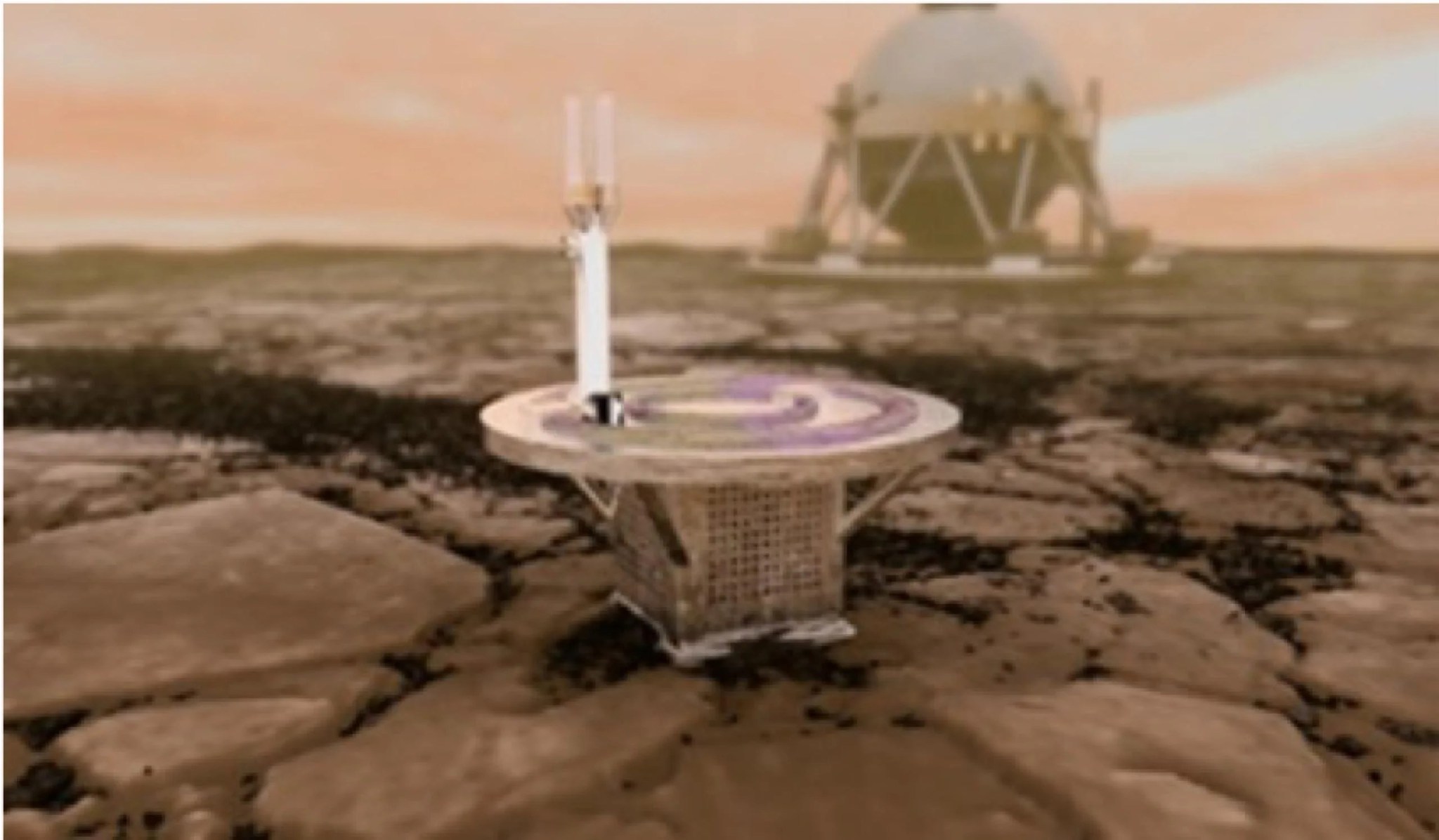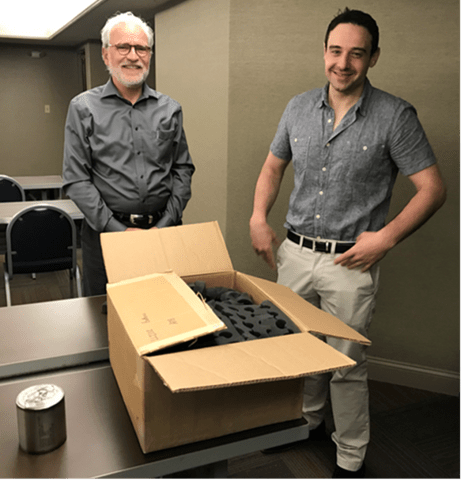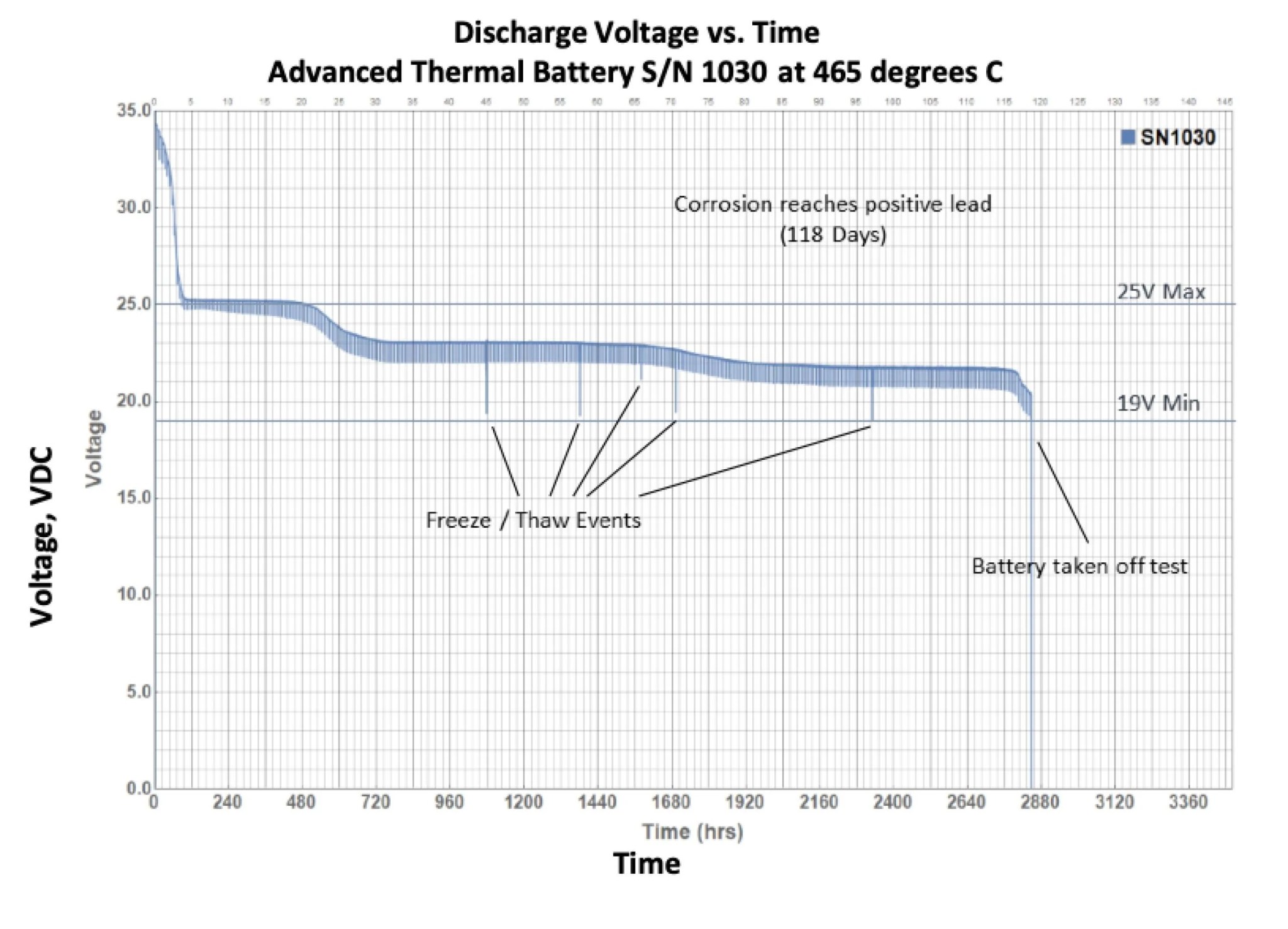PROJECT
Long-Lived In situ Solar System Explorer (LLISSE)
SNAPSHOT
NASA and Advanced Thermal Batteries, Inc. (ATB) are developing a high-temperature battery system to power a long-lived lander on the Venus surface. Based on short-lived battery systems used for powering missiles, this new battery approach has demonstrated high-temperature operation for unprecedented periods of time, laying the foundation for a new paradigm in battery technology and for Venus landers.
How do you make a battery that works for months in conditions that melt lead solder, boil electrolytes in battery cells, and are the equivalent of being a kilometer under water? NASA and Advanced Thermal Batteries, Inc. (ATB) have taken on this challenge to enable a long-lived lander for the Venus surface. The result is the first battery to demonstrate the capability to operate at Venus temperatures for an entire Venus solar day (~120 Earth-days).
This new technology employs unique chemistry and a resilient design that leverages an approach often used to power smart missiles. This battery system is still in development, but the results so far demonstrate that batteries capable of operating in environments as harsh as that of Venus can soon become a reality and may provide a new energy storage device for future exploration in harsh environments across the solar system.
Earth’s sister planet, Venus, holds important scientific clues about our solar system, planets around other stars, and our home planet. Venus was the first planet that human-built spacecraft flew by, several missions have orbited around it, and short-duration landers have landed and operated on it. Yet there are still many important basic science questions that remain unanswered about this mysterious body because Venus poses significant challenges to acquiring the needed data, which cannot be overcome by traditional planetary spacecraft design approaches.
Venus is often called Earth’s Evil Twin because it is about the same size as Earth and may be composed of similar material, but the surface conditions on Venus are extreme. On the Venus surface, temperatures reach approximately 465 degrees Celsius, which can melt lead in electrical circuits and cook standard batteries. The pressure at the Venus surface can reach 92 times what we experience on Earth (equivalent to what one would feel at nearly a kilometer under water). The Venus atmosphere is also reactive and can quickly impact many materials like copper that are used to construct traditional spacecraft. These extreme environmental conditions have limited the life of all Venus landers to date to approximately two hours or less, which does not allow in-situ data collection for a significant time.
A team from NASA Glenn Research Center, with support from other NASA centers and institutions is developing a small lander—the Long-Lived In situ Solar System Explorer (LLISSE)—to address the many challenges at the Venus surface and enable long-duration operations. LISSE uses the latest advances in high-temperature systems and a novel concept of operations to allow operations on the surface of Venus for 60 days or longer while it collects science data and transmits it to a Venus orbiter. LLISSE is intended to be a ~10 kg lander carrying a suite of small sensors to measure winds, radiance, temperature, pressure, and abundances of key atmospheric chemical constituents. LLISSE will be a complete system with electronics, communications, and instrumentation—all of which will require a battery to operate.
Since there were no existing batteries that could meet LLISSE requirements, NASA and its collaborators had to develop one. Toward this end, ATB is conducting significant battery research and development efforts, including development of a long-life, molten salt battery with a low self-discharge rate for the LLISSE Venus lander. The goal is to develop a battery that can sustain 60 days of continuous discharge operation to support a bus operating at +25V and -25V in the harsh conditions on the Venus surface.
Thermal batteries possess some of the highest power densities of any reserve battery technology. On Earth they are maintenance free, largely unaffected by severe dynamic environments, and have a proven history of high reliability. Furthermore, they can withstand long-term storage, retaining the ability to provide immediate power upon activation for over 20 years. These properties stem from the fact that thermal batteries utilize a high temperature electrolyte that is solid and inert at standard room temperature. On Venus, thermal batteries can utilize the ambient atmospheric conditions to heat the electrolyte and can remain operational without the need for pyrotechnics or thermal insulation. Existing thermal battery electrochemistry, however, involves very high self-discharge (internal chemical reactions that use up battery life), so a thermal battery typically only lasts for hours on Venus.
Direct adaption of thermal battery technology to enable Venus science objectives is difficult, as the available chemistries and designs can only enable hours of operation, not days or months. For this reason, modifications to battery chemistry and architecture are required to develop a long-lived battery for the Venus surface. ATB’s battery development work to date has focused on lithium alloy anodes, metal sulfide cathodes, and alkali halide molten salt electrolytes, and the team has successfully reduced the internal battery reactions that govern self-discharge and reduce battery lifetime and capacity.
ATB has developed a battery that meets the targeted voltage range and has operated for 118 days, nearly twice the required lifetime. The battery contains 17 individual cells in series and specifically designed chemistry and structural materials to meet the requirements of the LLISSE mission.
Now that the core battery capabilities have been demonstrated, ongoing work at ATB is planned to optimize a robust design to survive shock and vibrational loads. Additional efforts will focus on a pressure vessel container and packaging aspects for the final batteries. It is expected that a complete prototype Venus battery system will be demonstrated in the next 18 months.
“This recent battery technology demonstration, with improved architecture and low self-discharge electrochemistry, is a huge accomplishment that many may have not thought possible.”
- Dr. Kevin Wepasnick, ATB Project Engineer
The battery technology, like other technologies in development for this long-lived Venus surface lander, has a range of other science applications including missions to explore Mercury or to descend into the atmospheres of gas giants. Furthermore, this technology may provide power where traditional systems cannot operate, such as high-temperature jet engines or harsh industrial environments.
PROJECT LEADS
Mr. Thomas Miller, NASA Glenn Research Center
SPONSORING ORGANIZATION
Planetary Sciences Division
Read more Technology Highlights










































